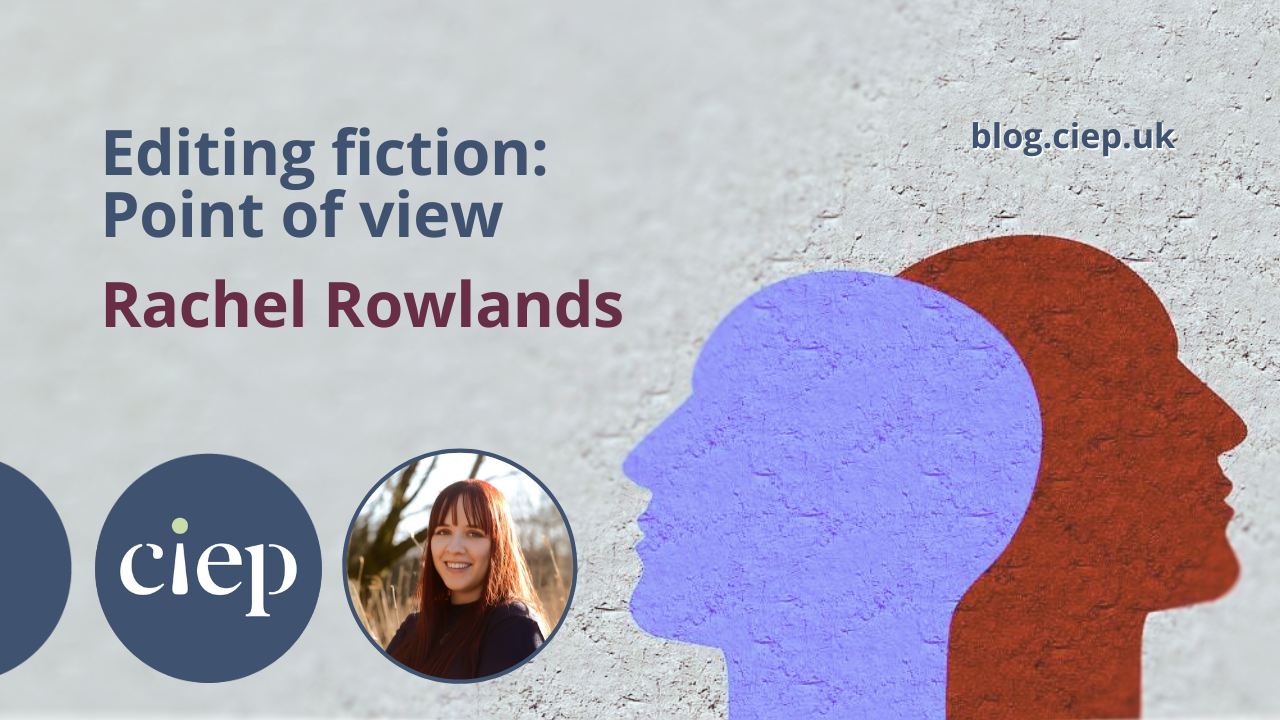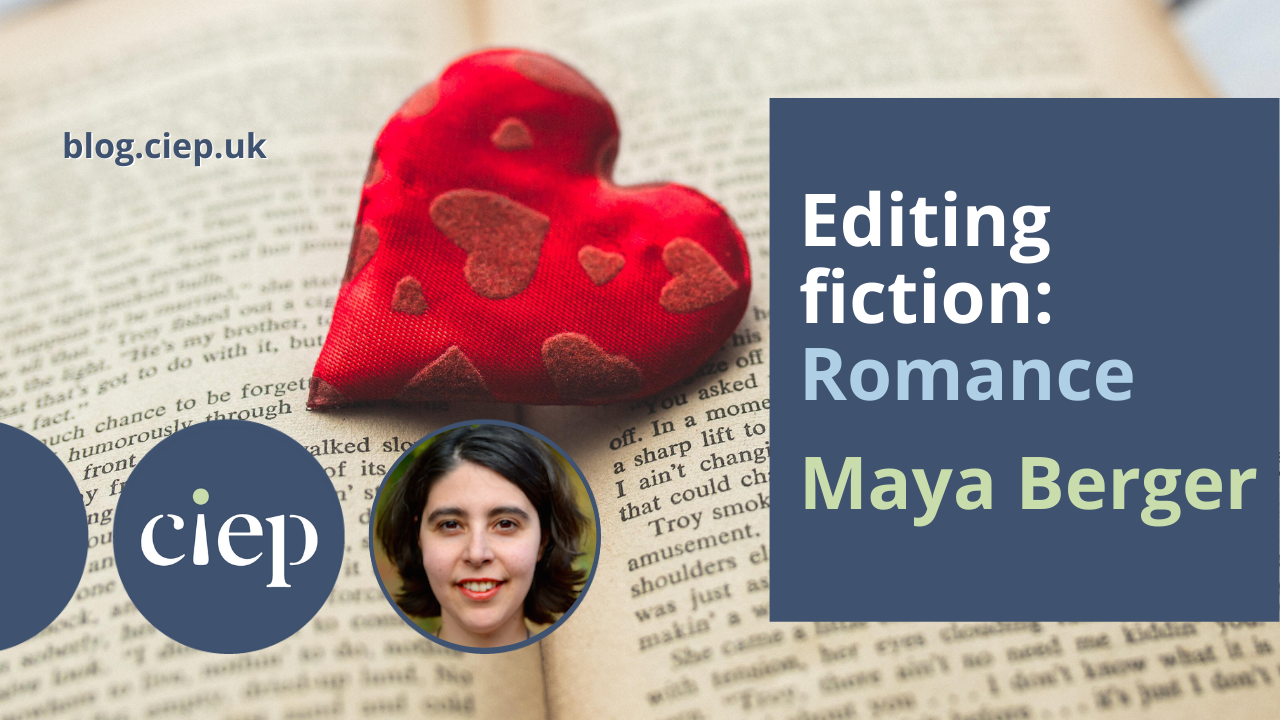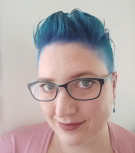In this post, Rachel Rowlands looks at how fiction editors can help authors to use point of view consistently and in a way that works well for the story.
Point of view is a crucial element of fiction editing – and it’s something newer writers often struggle to get to grips with. As editors, it’s part of our job to be able to point out to an author when they’ve broken out of their chosen perspective, and to advise them on what will work best for the type of story they’re telling.
Point of view is the lens through which we view the story – whose eyes we experience the story’s events through. This could be a single main character or multiple characters. It’s a huge topic (there have been entire books written on the subject!), so after a quick crash course in the different types, I’ll list some of the main sticking points I’ve come across as a fiction editor, and how you can help authors deal with them too.
Point of view: The different types
- First-person: this one is pretty straightforward! A character narrates the story using ‘I’ (‘I headed into the woods to search for him’, ‘I laughed’). The benefit here is that this can make the narrative feel much closer to the main character. It’s common in certain genres and age categories, such as young adult books.
- Second-person: second-person point of view involves the use of ‘you’ (‘you walked across the street’, ‘you said’). This is quite an uncommon choice, and is best used carefully – some readers hate it with a passion! However, it can be a good way of making the reader feel more involved in the story.
- Third-person limited: in third-person limited, we use pronouns such as ‘he’, ‘she’ and ‘they’ (for example ‘she grabbed his hand’ and ‘they weren’t listening to her’). The clue to this one is in the name: we’re limited to one character’s perspective and are zoomed in on them. We experience one point of view. This can be per chapter, per scene or for the whole book, depending on the author’s choice.
- Third-person omniscient: in this point of view, we again use pronouns such as ‘he’, ‘she’ and ‘they’. But in omniscient, we are more zoomed out. The narrator is godlike, and knows everything about the story and characters, meaning we can enter anyone’s mind we like. The narrator can also know things the characters can’t. This point of view is more common in classic literature, and so is often seen as slightly old-fashioned now, but for some stories, it can work.
The sticking points
There are common problems that come up when it comes to point of view, and some of them can be trickier than others to communicate to authors.
Some point-of-view problems may mean you have to advise an author to completely scrap a perspective, or even rewrite their book in another perspective entirely.
Here are some of the most common point-of-view problems, and how you can help authors overcome them.
The chosen point of view doesn’t work for the book
Sometimes, the point of view just doesn’t work for the type of book the author is writing. A good example of this would be a middle-grade author writing for children, using the omniscient viewpoint, and diving into the perspective of all the adult characters.
This likely doesn’t work for a few reasons: omniscient has become a bit old-fashioned and outdated, particularly for children’s books (it was used, for example, in JM Barrie’s Peter Pan way back in 1904). It can also muddle the target audience. In a middle-grade book, we want to be focusing on the children’s point of view, not the adults’. In children’s books, the general rule of thumb is that children read about people their own age or slightly older. Having the point of view of characters over the age of 18 muddies the waters and pushes the book out of its intended age category.
The author is head-hopping
Head-hopping tends to occur when an author is writing in third-person limited, and is zoomed in on one character. Sometimes, the author slips up, and gives us the thoughts and feelings of a non-viewpoint character.
For example, let’s say the author is writing a chapter in third-person limited, following a character called Tom. The chapter is clearly zoomed in on Tom, and we get insight into his thoughts and feelings throughout:
Tom heaved a sigh. How was he supposed to get on with his week now, with his sister being so difficult? ‘I don’t want to talk about it right now,’ he told her.
The chapter is written this way, close to Tom, consistently. Then, suddenly, we get a sentence where we know what his sister, Michelle, is thinking:
Michelle crossed her arms. She’d expected this reaction but it still made her cheeks feel hot with fury.
This would be considered head-hopping – we’ve dipped into Michelle’s head to learn about what she’s thinking and feeling, but we need to be following Tom. In this case, the sentence could be cut down so only the first half remains, or rewritten so the second half focuses on Tom.
Some forms of head-hopping can be more subtle than this, so make sure you’re on the lookout for this kind of switch!
Using too many points of view
Sometimes an author wants to write from the point of view of lots of different characters, and so we get lots of scenes or chapters from the perspective of different people. Even the most skilled authors can find this difficult!
For new writers in particular, using lots of perspectives can occasionally cause issues: there may be so many point-of-view chapters or scenes that readers will struggle trying to keep up with them. It might be harder to give each character a unique voice, because the author has spread themselves too thin. And it may be difficult to develop a protagonist with a clear goal and well-defined personality, because the author is juggling too many storylines and points of view.
As an editor, if you think a manuscript is struggling with any of these issues, odds are a reader will think the same. The author in many of these cases might be better off scaling back on some of the perspectives so they can focus on what matters most to the story.
The author’s own voice intrudes on the narrative
This is a common issue when the author has chosen to use third-person limited, but occasionally slips into omniscient by having their own ‘author voice’ intrude on the narrative. This is a difficult thing to spot, because it requires having a good knowledge of the differences between third-person limited and omniscient, and having a honed eye for each! Here’s an example of how the author’s voice can intrude.
If the entire book has been clearly written in the point of view of a character called Cassandra, in third-person limited (so kept very close to Cassandra throughout), keeping this consistent is important. The author voice suddenly intruding may look something like this:
Cassandra twisted her hands, her cheeks burning. She had to do something to stop this. Little did Cassandra know that things were about to get much worse …
Here, the author’s own ‘godlike’ voice has intruded to give the reader a glimpse of the future. We’ve slipped into omniscient, and the author has spoken directly to the reader. As the book was written in third-person limited elsewhere, we’ve broken out of our intended point of view. An intruding author voice can be more obvious (like the movie-trailer-style example above), or more subtle, so getting a good handle on both perspectives can help you identify this issue.
The easiest way to practise identifying this type of slip is to read novels that use both types of third-person point of view, so you become familiar with how each of them works. Some examples of books written in third-person limited are The Lost Flowers of Alice Hart by Holly Ringland, The Priory of the Orange Tree by Samantha Shannon and The Giver by Lois Lowry. Third-person omniscient books are less common these days, but some popular examples are Dune by Frank Herbert and Peter Pan by JM Barrie.
Those are some of the common issues with point of view that I’ve come across while editing fiction, but there are more that you’ll no doubt encounter! There are lots of great resources out there that you can check out to learn more. Here is some recommended reading to brush up:
- Self-Editing for Fiction Writers by Dave King and Renni Browne (chapter 3: Point of View)
- Point of View by Sandra Gerth
About Rachel Rowlands
Rachel Rowlands is a fiction editor, author and Advanced Professional Member of the CIEP. She has a degree in English and creative writing and has worked on around 200 books for publishing houses (including HarperCollins, Hachette, Canelo and Penguin Random House), as well as for independent authors.
 About the CIEP
About the CIEP
The Chartered Institute of Editing and Proofreading (CIEP) is a non-profit body promoting excellence in English language editing. We set and demonstrate editorial standards, and we are a community, training hub and support network for editorial professionals – the people who work to make text accurate, clear and fit for purpose.
Find out more about:
Photo credits: faces by geralt on Pixabay; group of friends by William Fortunato on Pexels.
Posted by Sue McLoughlin, blog assistant.
The views expressed here do not necessarily reflect those of the CIEP.










